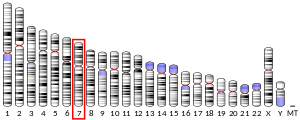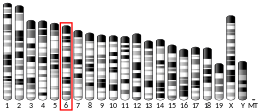Zinc finger protein 398
Appearance
| ZNF398 | |||||||||||||||||||||||||||||||||||||||||||||||||||
|---|---|---|---|---|---|---|---|---|---|---|---|---|---|---|---|---|---|---|---|---|---|---|---|---|---|---|---|---|---|---|---|---|---|---|---|---|---|---|---|---|---|---|---|---|---|---|---|---|---|---|---|
| Identifiers | |||||||||||||||||||||||||||||||||||||||||||||||||||
| Aliases | ZNF398, P51, P71, ZER6, zinc finger protein 398 | ||||||||||||||||||||||||||||||||||||||||||||||||||
| External IDs | MGI: 1917856; HomoloGene: 12358; GeneCards: ZNF398; OMA:ZNF398 - orthologs | ||||||||||||||||||||||||||||||||||||||||||||||||||
| |||||||||||||||||||||||||||||||||||||||||||||||||||
| |||||||||||||||||||||||||||||||||||||||||||||||||||
| |||||||||||||||||||||||||||||||||||||||||||||||||||
| |||||||||||||||||||||||||||||||||||||||||||||||||||
| |||||||||||||||||||||||||||||||||||||||||||||||||||
| Wikidata | |||||||||||||||||||||||||||||||||||||||||||||||||||
| |||||||||||||||||||||||||||||||||||||||||||||||||||
Zinc finger protein 398 is a protein that in humans is encoded by the ZNF398 gene.[5]
Function
[edit]This gene encodes a member of the Kruppel family of C2H2-type zinc-finger transcription factor proteins. The encoded protein acts as a transcriptional activator. Two transcript variants encoding distinct isoforms have been identified for this gene. Other transcript variants have been described, but their full length sequence has not been determined.
References
[edit]- ^ a b c GRCh38: Ensembl release 89: ENSG00000197024 – Ensembl, May 2017
- ^ a b c GRCm38: Ensembl release 89: ENSMUSG00000062519 – Ensembl, May 2017
- ^ "Human PubMed Reference:". National Center for Biotechnology Information, U.S. National Library of Medicine.
- ^ "Mouse PubMed Reference:". National Center for Biotechnology Information, U.S. National Library of Medicine.
- ^ "Entrez Gene: Zinc finger protein 398". Retrieved 2016-02-29.
Further reading
[edit]- Conroy AT, Sharma M, Holtz AE, Wu C, Sun Z, Weigel RJ (2002). "A novel zinc finger transcription factor with two isoforms that are differentially repressed by estrogen receptor-alpha". J. Biol. Chem. 277 (11): 9326–34. doi:10.1074/jbc.M107702200. PMID 11779858.
This article incorporates text from the United States National Library of Medicine, which is in the public domain.




